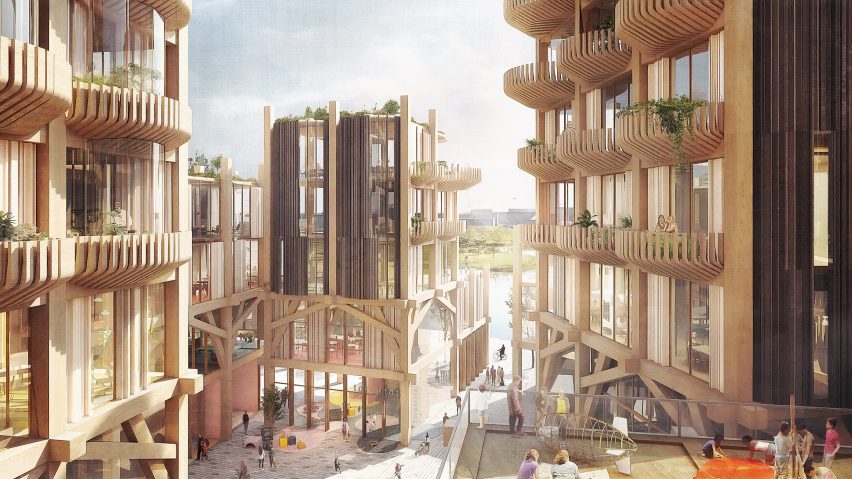
Snøhetta and Heatherwick Studio unveil designs for Sidewalk Labs' Toronto neighbourhood
Alphabet's Sidewalk Labs has tapped Thomas Heatherwick's studio and architecture firm Snøhetta to develop proposals for the smart, mass-timber city that the company is developing on Toronto's waterfront.
Renderings by Snøhetta and Heatherwick Studio were used to illustrate a document outlining the updated concepts and proposals for Sidewalk Toronto, a project under development by Sidewalk Labs – a subsidiary of Google's parent company – and partner Waterfront Toronto.
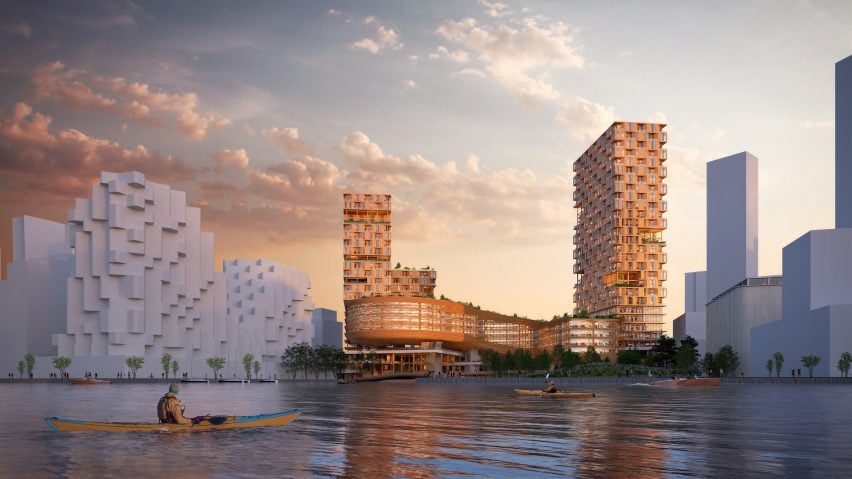
Released 14 February 2019, the Project Update focuses on the development of the 12-acre (9.5-hectare) Quayside neighbourhood at Parliament Slip – east of the city's Downtown area on the edge of Lake Ontario. The site makes up a small portion of the Sidewalk Toronto's scheme, which was first unveiled last year and billed as a "future city", and is intended as a test bed for later expansion.
Advancing on Sidewalk's August 2018 update of the parcel, which revealed plans to construct buildings from local and renewable Canadian timber, Snøhetta and Heatherwick Studio's designs are all wooden.
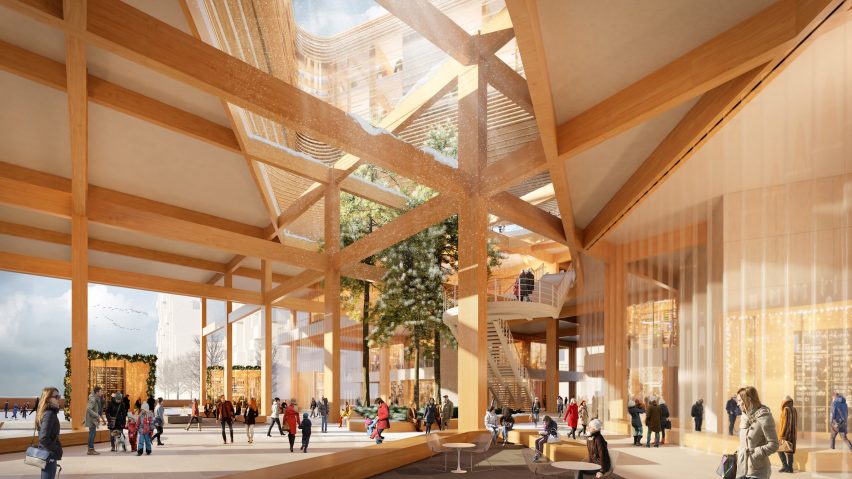
Visuals by Snøhetta include an exterior image of a pair of high-rises linked by a curved structure. While their uses are not explicit, it is likely the buildings could form part of the housing that Sidewalk Labs plans to include in the new town.
These include models of co-living for singles and purpose-built family dwellings, as well as affordable housing totalling 80 per cent of the accommodation – much more than the average 26 per cent provided in Toronto developments. The amount would also be four times that typically offered in a waterfront development.
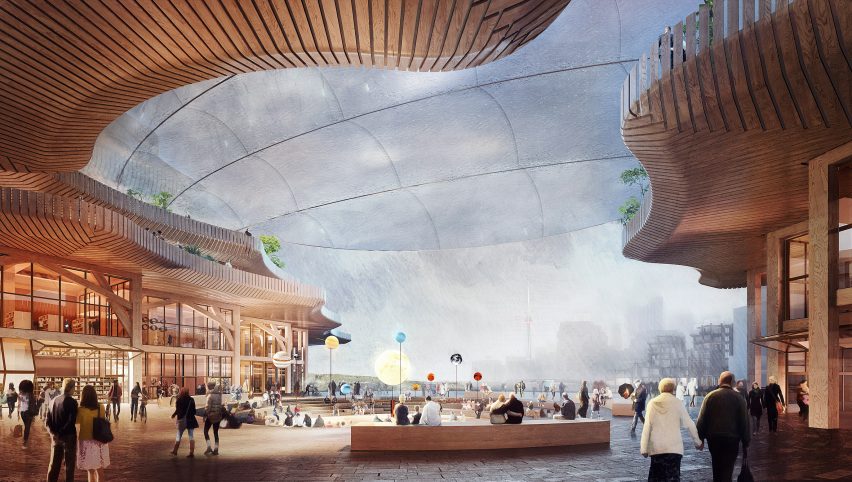
Snøhetta's interior view reveals an exposed gridded wooden construction that outlines a courtyard, showcasing one of the many public arenas intended for the site. A large tree grows up the centre, while translucent screens offer glimpses inside the buildings.
Meanwhile, Heatherwick Studio has produced designs for the Google Canadian headquarters at the site, following the firm's work with BIG on the tech company's new California campus and London HQ.
The Sidewalk Toronto HQ, which is intended to bring more Google jobs in the eastern waterfront, features a sunken circular courtyard topped with a bubbly roof, and curvilinear wooden balconies and a bubbly roof.
Similar organic forms can be found in Heatherwick's proposal for another courtyard and a waterfront complex, where buildings are fronted with rounded, slatted balconies. Depicted in snowy conditions, the waterside site also features the "building coats" that would be drawn over to protect the woodwork from harsh weather conditions.
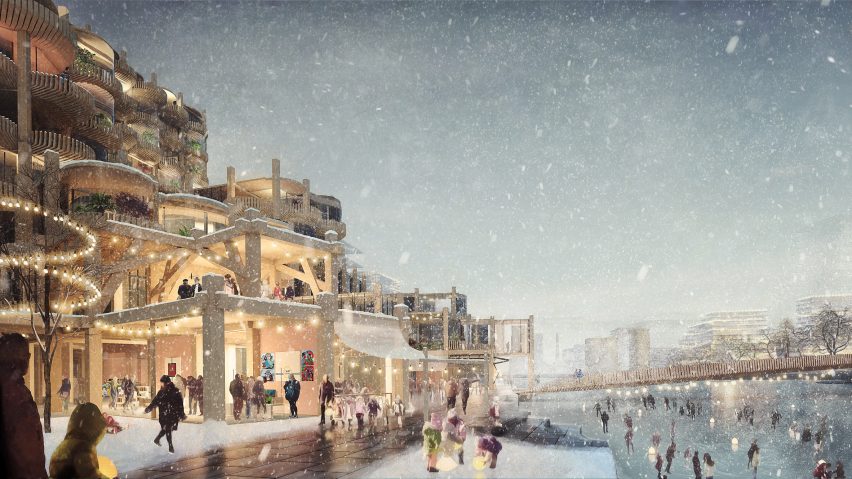
Heatherwick Studio has also developed the Innovation Centre, which Sidewalk Labs intends as a hub for startups and tech companies.
Sidewalk Toronto, which was first unveiled in October 2017, aims to address many urban issues – like affordable housing, traffic congestion and safety, and environmental problems – with smart designs. Sidewalk Labs urban planner Rohit Aggarwala said it could provide a model for cities to use the latest technologies in urban design, in an interview with Dezeen last year.
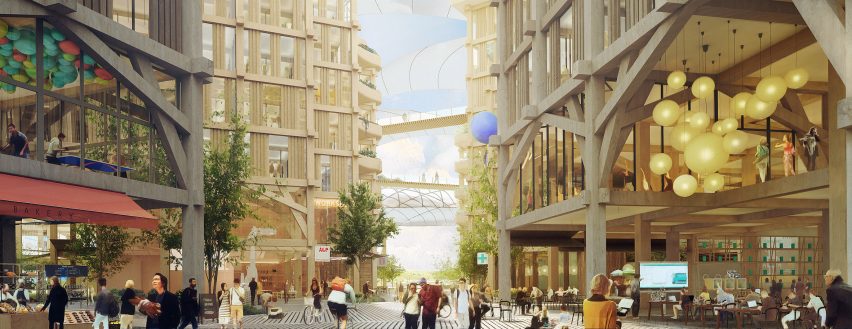
Following this ethos, the company chose mass timber construction for the neighbourhood to provide an example of an affordable and sustainable built environment. The cradle-to-cradle construction forms part of a wider environmental strategy, along with comprehensive recycling and composting systems, and underground, robotic trash disposal.
The wooden construction would also support the Canada's timber industry.
The first visuals for the Quayside project were completed by Michael Green Architecture – the firm behind the largest mass-timber building in United States. These explored two types of engineered wood: cross-laminated timber (CLT) and glue-laminated timber, also known as Glulam, which are both significantly stronger than standard wood.
The proposal includes public spaces that are built "modular kit of parts" so that they could easily be rearranged for different uses. Other forward-thinking details in the proposed neighbourhood are the integration of autonomous vehicles and the introduction of larger curbs.
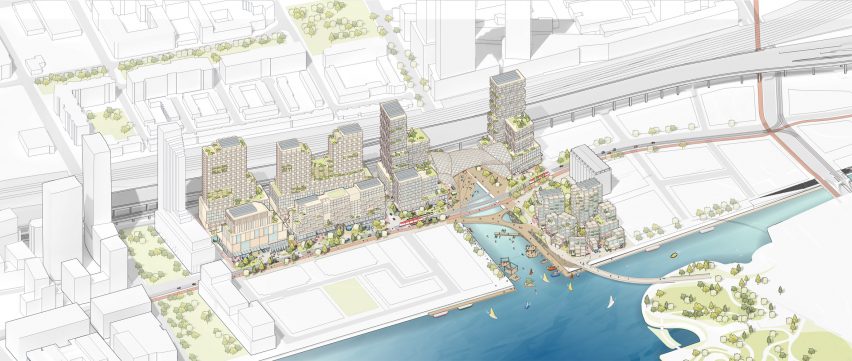
In the latest update, the team developed plans for sourcing data from residents living in the neighbourhood. This had formed a point of contention for many, particularly after the Facebook–Cambridge Analytica data scandal, which saw data allegedly used to influence voters in political campaigns.
However, the revised scheme suggests the establishment of an independent Civic Data Trust, which will de-identify all personal markers before using the data.
Featured images is by Picture Plane for Heatherwick Studio.